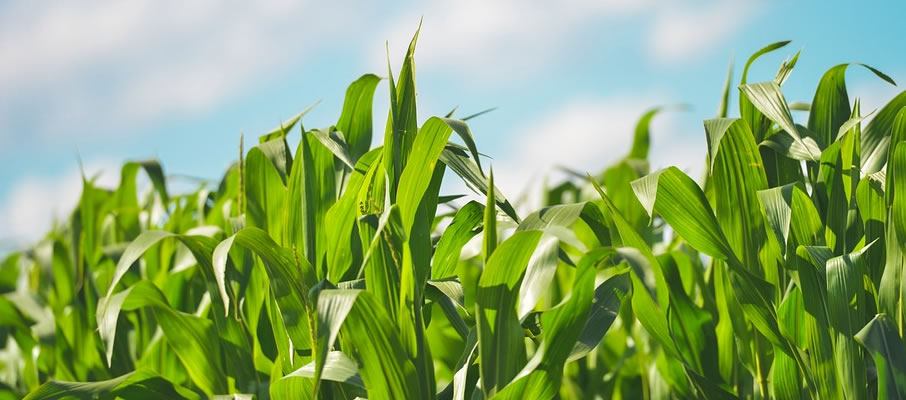

Local names in Kenya (Mahindi na Maharagwe, Oduma/Bando gi Oganda, Madumwa na Managanda)
Overview
Smallholder farmers commonly use maize and bean intercropping to increase soil nitrogen and enhance agricultural productivity. If intercropped, the choice of the legume intercrop should be based on presence of soil and climatic conditions that meet the requirements of both maize and the legume of choice. Maize-legume systems usually produce less maize than maize monoculture but provide higher economic returns. Higher land productivity makes maize-legume systems especially suitable for smallholders. Intercropping maize with legumes also increases land utility and regulates pests.
Site Selection
Select a site away from shade to allow for sufficient sunshine; and should be at least 10 meters away from the road to prevent dust and vehicle fumesRead More
Altitude range
Intercrop require altitudes of 1000–2000 masl
Soil type and conditions
Well-drained loamy soils with pH of 5.5-6
Temperature range
The temperatures should be 15-27oC
Rainfall
The rainfall should be 500-1500 per growing period
Land Preparation
Consider minimum tillage to; reduce cost, conserve soil and water and nutrients reduce workload Read More
Steps during land preparation.
Add manure and fertilizers to the soil in the right amounts to provide the required plant nutrients for vigorous crop growth
Pre-Planting
Certified or farmer saved seeds Read More


Varieties
Select a suitable and well adapted variety. Sort out good seeds to ensure that they are free from insects, disease infestation and weed seeds Read More
Planting
Plant at the onset of rains e.g. 4 continuous days of sufficient rain to take advantage of nitrogen flush and when the soil is moist Read More
Planting Procedure

Maize and beans intercrop
Water Management
It is uneconomical to irrigate maize unless in large parcels of land or in dry areas or dry seasons Read More
Irrigation is an essential climate change adaptation practice under dry conditions but must observe efficient water-use and wise application to avoid leaching
Weed Management
Weeding should be done early. After beans will spread to smoother the weedsRead More
Apply integrated weed management to control weeds
Soil Fertility
Intercrop with nitrogen fixing leguminous species to increases nitrogen availability for maize Read More
Crop Management
Consider using minimum tillage to save on the costs of productionRead More
Consider using conservation farming approaches like minimum soil disturbance, permanent soil cover, crop rotation and soil conservation measures

Pest Management
Check for pests; use vector control or natural enemies e.g. aphids Read More
Pests include;
Fall Armyworm, Armyworm (Spodoptera exempta), maize stalk borer (Busseola fusca), termites, cutworms, leaf miner, moths, beetles, thrips, grasshopper, rodents (rats and mice), weevils (Sytophylus zeameis), larger grain borer (Prostephanus truncatus), African bollworm (Heliothis armigera), bean aphid (Aphis fabae), bean fly (Ophiomyia spp), flower thrips (Taeniothrips siostedti) and leaf miner

Fall Armyworm(Spodoptera frugiperda)

Bean fly

Maize stalk borer

African bollworm
Pests control strategies
Disease Management
Check for disease; use appropriate fungicides as recommended by experts Read More
Diseases Include;
Head smut (Sphacelotheca reiliana), Smut (Ustilago maydis), Maize lethal necrosis disease (MLND), Maize streak virus, Northern leaf blight, Common rust, Grey leaf spot, Root rots (Fusarium Black), Leaf spots (Angular Phaeisariopsis griseola, Alternaria), Anthracnose (Colletotrichum lindemuthianum), Bean rust (Uromyces appendiculatus), Bacterial blight (Halo Pseudomonas phaseolus, Common Xanthomonas phaseoli, Ashy stem (Macrophomina phaselina), Bean common mosaic necrosis virus (BCMV), Bean scab (Elsione phaseoli) and White mould (Sclerotinia phaseoli)

Head smut

Bean anthracnose
Bean bacterial blight

Maize lethal necrosis disease (MLND)
Maize streak virus


Maize common rust

Bean common mosaic necrosis virus (BCMV)
Bean scab
Disease Management Strategies
Maturity
Beans mature before maize 45 to 75 days after planting while maize takes 4 to 9 months after planting Read More
Beans mature before maize 45 to 75 days after planting while maize takes 4 to 9 months after planting
Harvesting
Beans are harvested first before pods begin to shatter Read More
Beans are harvested by cutting or uprooting the whole plant while maize is harvested by cutting and stalking to enhance drying and the de-husking Intercrop will produce about 1.9 tonnes per ha
Storage and Transportation
Sort then store in airtight bags or metallic silos Read More
Sort then store in airtight bags or metallic silos
Post-Harvest Handling
Dry maize and beans to the required moisture content of 13-14%Read More
Share This News